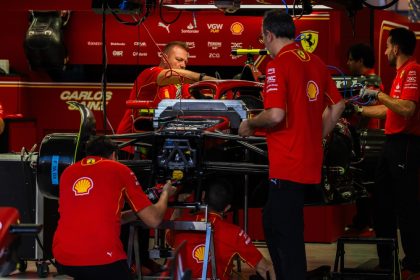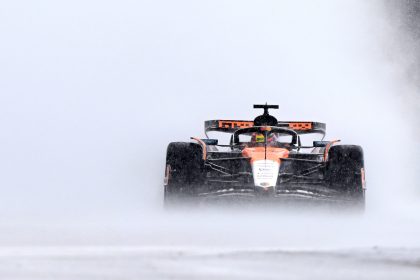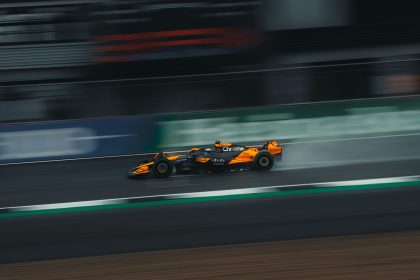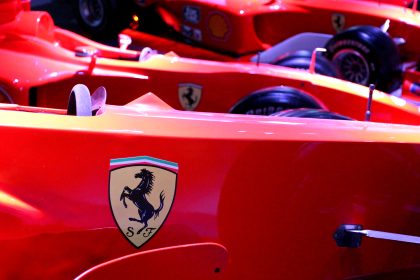If you’ve ever wondered what Formula 1 truly is, let me save you the price of a paddock pass: it’s a relentless, unsentimental machine that chews up legends, spits out scapegoats, and occasionally—just occasionally—lets a dreamer slip through the gears. This week, as the circus barrels into Spa for the Belgian Grand Prix, the headlines are ablaze with the kind of drama that would make even Enzo Ferrari raise an eyebrow from the afterlife. Team bosses under siege, prodigies wrestling with expectation, and the sport’s greatest designer locked in a design trance at Aston Martin. Welcome to July 2025, where the only thing more volatile than the weather at Spa is the mood in Maranello.
The Red Storm: Ferrari’s Eternal Search for Salvation
Let’s start with the most Italian of crises: Ferrari, the team that can turn a podium into a funeral and a rumor into a revolution. The latest tempest? Speculation swirling around team principal Frédéric Vasseur’s future, with the Italian media sharpening their knives and the tifosi oscillating between worship and mutiny. It’s a cycle as old as the Scuderia itself—one that would be comical if it weren’t so tragic.
Toto Wolff, Mercedes’ own Machiavelli, has waded into the fray, offering a rare olive branch to his rival.
Fred is one of the best racing managers that I know. If I wasn’t here, I would take Fred. So, I respect him a lot. He’s a great personality. He’s a straightforward guy. He doesn’t do politics and lies. He knows what he’s talking about.
Toto Wolff
Maybe that’s something you need to grow a little bit of a thick skin, because if he wins, he is Jesus Christ, and if you lose, you’re a loser. That’s how Italy is. That’s fantastic. That’s the passion that is in there. You’ve got to embrace that. Maybe that’s something he needs to learn. But the rest, he should be given the confidence in running this team. They won’t get anybody better.
Toto Wolff
Wolff, ever the historian, invoked the ghost of Jean Todt, Ferrari’s last true emperor. Todt joined in 1993 and didn’t deliver a title until 2000—a seven-year odyssey that rewrote the team’s DNA. Under Todt, Ferrari became a fortress of discipline and unity, winning five consecutive drivers’ titles and six constructors’ crowns. Since his departure, the team has cycled through principals like a nervous driver through gears at Monaco: Domenicali, Mattiacci, Arrivabene, Binotto, and now Vasseur. Each promised a renaissance; each found themselves outmaneuvered by the weight of expectation and the inertia of history.
Today, Ferrari sits second in the Constructors’ Championship, 238 points behind McLaren and just 12 ahead of Mercedes. The knives are out, but the real question is: will Ferrari ever learn that greatness is built on patience, not panic?
Read the full story on Formula1.com
Bearman’s Baptism: The Price of a Dream
While the old guard wrestles with existential angst, the new blood is learning that Formula 1 is less a fairy tale and more a trial by fire. Enter Oliver Bearman, Haas’s 20-year-old Briton, whose journey from karting obscurity to the F1 grid is a masterclass in grit, sacrifice, and the cruel arithmetic of opportunity.
Bearman’s story is not the sanitized, sponsor-friendly narrative you’ll find in a Netflix montage. It’s a tale of family sacrifice—his father giving up his own racing dreams to fund Ollie’s karting, the family scraping together every penny, and the ever-present fear that one bad weekend could end it all.
My dad used to race, and my grandfather before him. It was just club racing, for fun. They didn’t have the budget—or probably the talent—to go much further. I remember watching my dad race his Porsche when I was five or six, and I absolutely loved it. The sound, the smells, the whole thing. That’s when I fell in love with racing.
Oliver Bearman
I remember when I moved up from karts to F4, my dad was clear—we couldn’t afford to do two, three, four seasons. It was just too expensive. We even had to scale back on testing. That need to deliver straight away—on zero mileage—became a strength.
Oliver Bearman
Bearman’s big break came in Jeddah last year, when he was called up to race for Ferrari at a moment’s notice.
It was literally a few hours’ notice. But it was the biggest opportunity of my life. Things weren’t going great in F2 at the time, and suddenly I had the chance to show what I could do in a Ferrari F1 car. I was lucky to get that race. I’d only done two days in an F1 car before, so I was cautious—I didn’t want to mess it up. That held me back a bit, but I think I still showed about 50% of what I’m capable of. And that was enough to get me here. Honestly, I don’t know where I’d be now if Jeddah hadn’t happened.
Oliver Bearman
This year, reality has bitten hard. Haas is not a points machine, and Bearman has had to recalibrate his expectations.
There were races where I felt I drove well, weekends I was proud of my performance, but it’s hard to feel satisfied when you see your name in P12 or P15.
Oliver Bearman
But if history teaches us anything, it’s that the crucible of adversity forges the strongest steel. Just ask Michael Schumacher, who spent years in the midfield before rewriting the record books.
Read Bearman’s full interview at Motorsport.com
Newey’s Green Revolution: The Maverick at Aston Martin
While Ferrari and Haas wrestle with their respective demons, over at Aston Martin, the mood is one of quiet, feverish anticipation. Four months ago, Adrian Newey—the sport’s most decorated designer—walked into Silverstone and promptly disappeared into what team principal Andy Cowell calls a design trance. The result? A technical revolution that has the entire factory buzzing.
Adrian is an amazing individual. He’s got great experience but the thing he loves is being at the drawing board thinking about the design of a racing car. And it’s not just one part on the racing car, it’s the whole system… He pushes the boundaries. He packages ten things into the space where only one would normally fit, and all the engineers see that as a challenge.
Andy Cowell
The pace with which we’re creating changes on the ’26 wind tunnel model is quicker than we’ve ever done before. It really is very impressive. It is like watching 100 people all run 100 metres sub-ten seconds, with perfect baton passes. It’s very exciting to see and all of that is enabled by having the facilities, and the people and the methods. So yeah, it’s an exciting journey into ’26.
Andy Cowell
Newey’s arrival is more than just a coup for Aston Martin; it’s a seismic shift in the sport’s balance of power. History shows that whenever Newey joins a team—be it Williams, McLaren, or Red Bull—he brings with him a period of innovation and, more often than not, dominance. His ability to exploit regulation changes is legendary, and with the 2026 rules looming, the paddock is watching with a mixture of envy and dread.
Read more about Newey’s impact at Formula1.com
Sauber’s Audi Awakening: The Quiet Revolution
Not all revolutions come with fireworks. At Sauber, soon to be Audi’s works team, the transformation is quieter but no less significant. Nico Hülkenberg’s podium at Silverstone—his first in a career that has spanned more than a decade—was a watershed moment, both for the driver and the team.
We talked about how important momentum is in the team. What I take from Silverstone is people start believing in us. I can say the words. I can say we’re gaining momentum. I can say we’re putting performance on the table. I can say that Mattia [Binotto, chief technical officer] and all the hard work he’s been putting in before I came here is coming to light. It’s true, but we’ve got a very long journey towards where we need to be as a team and it’s a great step in starting on that journey.
Jonathan Wheatley
Sauber’s recent upgrades have transformed the car’s handling, giving both Hülkenberg and rookie Gabriel Bortoleto the confidence to push. The result? Points in every race since Barcelona and a leap to sixth in the Constructors’ standings. For a team that has spent years in the wilderness, it’s a sign that the Audi era may finally deliver on its promise.
Read the full story at Racer.com
The Human Element: Why F1 Still Matters
It’s easy to get lost in the numbers—lap times, points, wind tunnel hours—but at its core, Formula 1 is a human drama. It’s about the pressure that turns men into legends or scapegoats, the sacrifices that families make for a shot at glory, and the relentless pursuit of perfection that drives engineers to the brink of obsession.
Take Ariana Bravo, a presenter whose journey from management consultant to F1’s pit lane is a reminder that the sport’s magic isn’t confined to the cockpit.
My favourite part of the role is being able to connect with fans and being able to bridge the gap between the sport and the fans who are either at the track or at home. I love being on the Fanzone stage, being able to see the fans there and the energy that they bring.
Ariana Bravo
Read Ariana Bravo’s story at F1 Academy
Waste a Bit More Time
If you’ve made it this far, you’re either a true fan or you’ve lost the remote. Either way, here’s how to keep the obsession going:
- Toto Wolff defends Fred Vasseur after recent scrutiny at Ferrari
- How one race shaped Oliver Bearman’s F1 future
- Cowell on Newey’s Aston Martin impact
- Sauber’s Audi transition already bearing fruit
- Just don’t give up – Formula 1 presenter Ariana Bravo on bringing racing to the fans
And for those who prefer their drama in moving pictures, here’s a classic: Iconic Mark Webber Onboards












